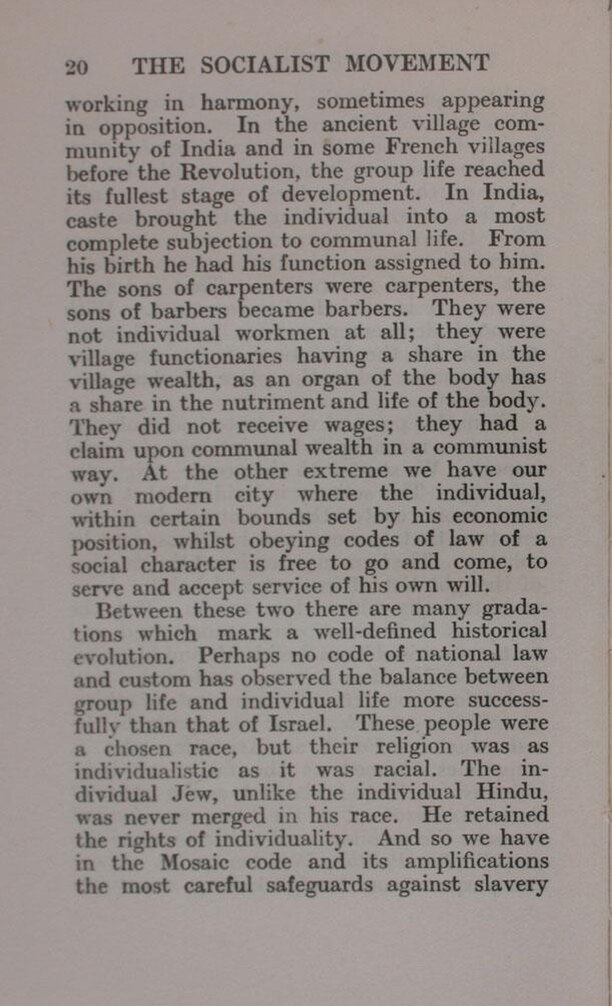working in harmony, sometimes appearing in opposition. In the ancient village community of India and in some French villages before the Revolution, the group life reached its fullest stage of development. In India, caste brought the individual into a most complete subjection to communal life. From his birth he had his function assigned to him. The sons of carpenters were carpenters, the sons of barbers became barbers. They were not individual workmen at all; they were village functionaries having a share in the village wealth, as an organ of the body has a share in the nutriment and life of the body. They did not receive wages; they had a claim upon communal wealth in a communist way. At the other extreme we have our own modern city where the individual, within certain bounds set by his economic position, whilst obeying codes of law of a social character is free to go and come, to serve and accept service of his own will.
Between these two there are many gradations which mark a well-defined historical evolution. Perhaps no code of national law and custom has observed the balance between group life and individual life more successfully than that of Israel. These people were a chosen race, but their religion was as individualistic as it was racial. The individual Jew, unlike the individual Hindu, was never merged in his race. He retained the rights of individuality. And so we have in the Mosaic code and its amplifications the most careful safeguards against slavery
